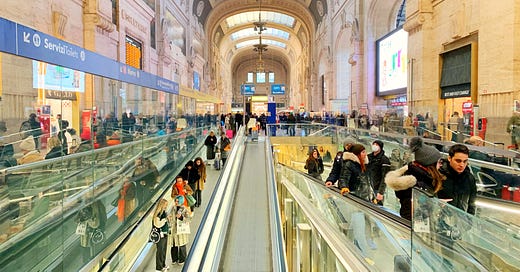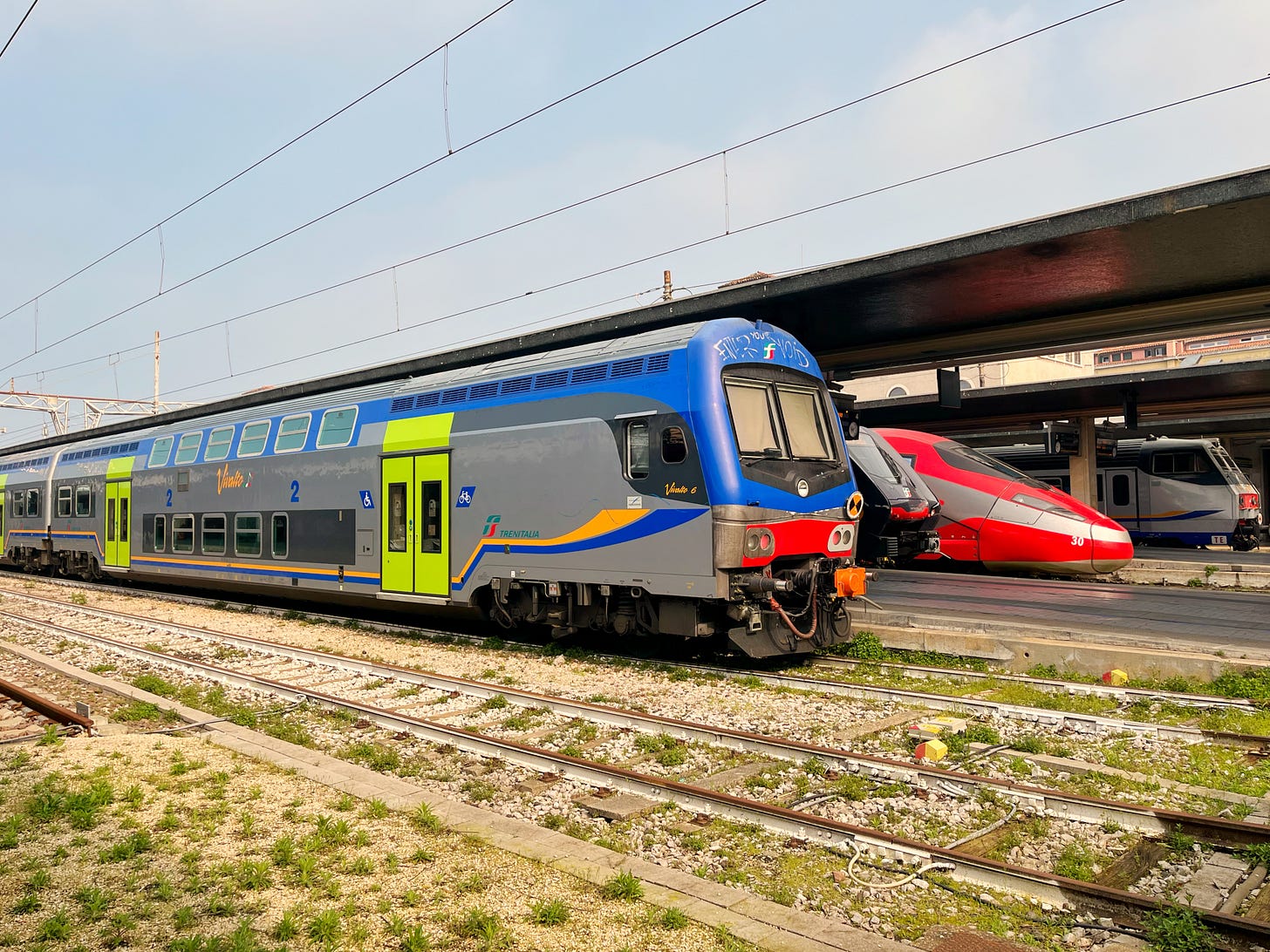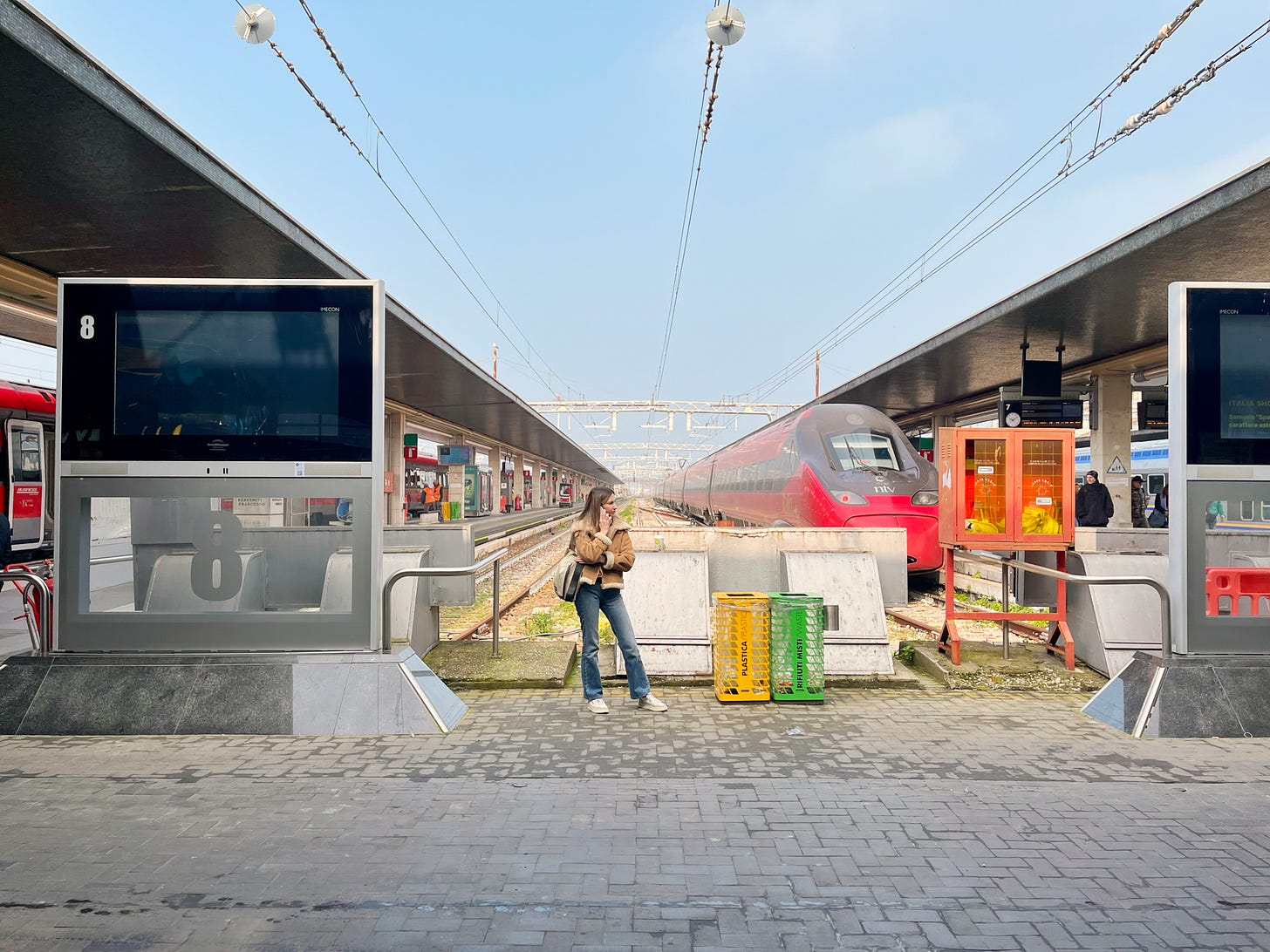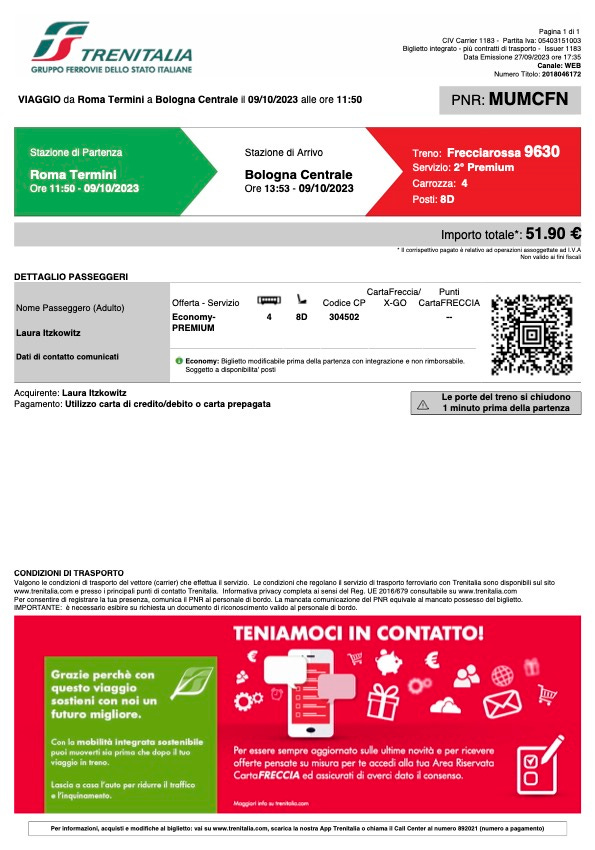One of the things I appreciate most about living in Italy is how extensive and efficient the country’s railway network is. I can hop on a high-speed train leaving from Rome’s Termini Station and be in the center of Florence in 90 minutes or Venice in four hours. And what an amazing feeling it is to disembark at Venezia Santa Lucia Station, walk outside and be right on the Grand Canal—no waiting for checked bags or long rides between the airport and the city center.
I could probably count on one hand the number of times I’ve flown within Italy. Why fly when the trains are so fast and easy to use, not to mention sustainable? I’ve probably taken hundreds of train rides in this country and have learned a thing or two about how to navigate the railways. If you, too, want to navigate Italy’s trains like a pro, here are some things you should know.
The types of trains you might encounter
Italy’s railway network is made up of high-speed trains called Freccie (literally meaning arrows), Intercity trains, and regional trains, all of which are run by Trenitalia (Italy’s state-run train operator). You’re most likely to encounter the Frecciarossa—which connects major cities like Rome, Florence, Bologna, Venice, Milan, Turin, and Naples—but there are also trains called the Frecciargento and Frecciabianca, which go to some smaller cities like Civitavecchia, Pisa, La Spezia, and Genoa. The Freccie are the fastest (and most expensive) trains, reaching speeds of up to 300 kilometers per hour.
Intercity trains go to mid-tier cities like Orvieto, Livorno, Viareggio, and Sestri Levante. Regional trains stop in small cities and towns like Frascati, Santa Marinella, Parma, and Tropea. So if you were trying to get from, say, Rome to Parma, you would take the Frecciarossa to Bologna and then change to a regional train. You could also take an Intercity or regional train between major cities like Rome and Florence—it would cost less than taking a high-speed train, but it would also take longer.
An alternative to Trenitalia, Italo is a private train operator with a network of high-speed trains that stop in many of the same cities where Trenitalia goes. I’ve only taken Italo once, but I found it to be comparable to Trenitalia—not particularly better or worse.
What services you can expect
I find the Freccie to be quite comfortable, even in economy. There’s a cafe car, where you can get espresso (obviously—this is Italy), wine, beer, soft drinks, snacks, and sandwiches. There’s free WiFi, which usually works in my experience, and bathrooms available. You won’t find these services on Intercity or regional trains, but Intercity trains have vending machines where you can buy coffee, cold drinks, and snacks.
How and when to book tickets
In general, I always book train tickets in advance online. You can do so via trenitalia.com or ItaliaRail. You don’t necessarily need to book tickets for regional trains in advance. You can buy them from the automatic ticket machines or the ticket office in the train station and the price will be the same no matter when you buy them. Ditto for Intercity trains.
You should always book tickets on the Freccie in advance—both in order to make sure you get a seat and also because the price of the Freccie will rise the closer you get to your travel date. For example, a ticket on the Frecciarossa from Rome to Florence booked more than a week in advance costs €27.90. If booked with less than 24 hours notice, a ticket on that same train jumps up to €86.
Double check to make sure you’re getting on the right train
A couple of weeks ago, I saw a tourist pleading with a ticket collector on the Frecciarossa who refused to accept her ticket. Why? Apparently she booked a cheaper ticket on a regional train, but got on the Frecciarossa instead. Whether it was an honest mistake or not, her ticket wasn’t valid on the train she boarded, so she had to buy a new ticket—no ifs, ands or buts.
Don’t make that mistake—always double check to make sure you’re actually getting on the right train. How? It’s not enough to find your train’s scheduled departure time and destination on the board. Every train has a unique number, which you can see at the top of your ticket. You need to make sure the number on your ticket matches up with the number posted on the board. The platform is usually posted to the board about ten minutes before the train’s scheduled departure, but it’s best to arrive at the station 20 minutes early to make sure you’re able to find and board your train smoothly.
Also keep in mind that on the Freccie, seats are assigned, so you need to make sure you’re in the right seat in the right car. On Intercity and regional trains, seats aren’t assigned, so feel free to choose any available seat.
When you need to validate your ticket
If you bought a ticket at the train station and have a physical piece of paper, you need to validate that ticket in one of the little machines on the platforms—regardless of what type of train you’re boarding.
If you booked a ticket for one of the Freccie online, you don’t need to do anything. When the ticket collector comes around, just show him your ticket, which you will have received via email as a PDF attachment. If you have a digital ticket for a regional train, it will automatically validate when the train departs. You’ll just need to click a link in the confirmation email that will load a page with the QR code. It might be a good idea to screenshot the QR code when you book your ticket just in case.
What if you have to change your ticket?
If you think you’re at risk of missing your train, you might be able to rebook yourself on the next train, but it depends on the ticket category you bought. Similar to basic economy tickets on airplanes, a super economy ticket on the Freccie can’t be changed or refunded. If you want to be sure that you’ll be able to change your ticket if necessary, be sure to purchase an economy or base ticket.
And remember that you must change your ticket before your train is set to depart, which you can either do online or at one of the customer assistance kiosks in the train station. You can’t just board the next Frecciarossa going to your destination. Your ticket is only valid for the specific train you booked.
Do you have questions or comments about riding Italy’s trains? Share them in the comments below!
Further Reading
For The Points Guy, I wrote about Italy’s high-speed trains and six cities you can visit on them. Check out that piece here.
A few years ago, I was lucky enough to be sent on the Venice Simplon Orient Express on assignment for Architectural Digest. You can read all about that extraordinary 1920s train here.
My colleague Kathleen Rellihan recently took the relaunched Espresso Cadore, a sleeper train that departs Rome in the evening and arrives in the Dolomites the next morning, and wrote about it for AFAR.
Planning to rent a car so you can visit places where the trains don’t stop? Be sure to read issue #12 about some things you should know about driving in Italy.









Getting ready to book my train tickets for family of five. Can I book all 5 at the same time and then book each trip? Want to do two weeks with 5/7 travel days, but confused about getting them all at same time. Seems like I can only get one pass at a time for each person. Can I use the same email for each one then book the trips all together? For Trenitalia. Wanting to go from Milan to Venice, then Venice to Florence, Florence to LaSpesia (staying in Vernazza), then final trip to Rome. Please advise...
Wow, this article is so coincidentally timely. I'm going to Italy for the first time next month and will be making 3 train journeys while there. Thanks for reassuring me that booking in advance was the way to go!